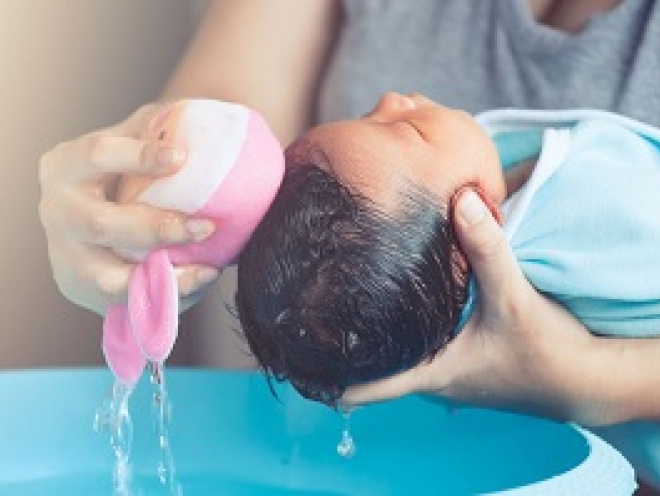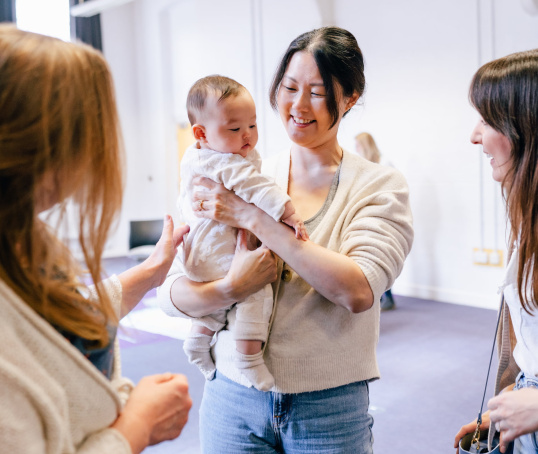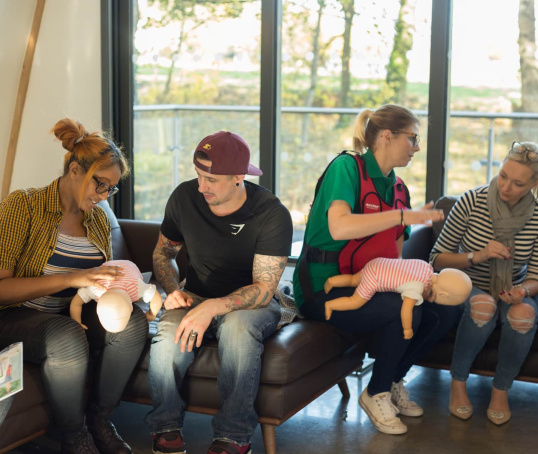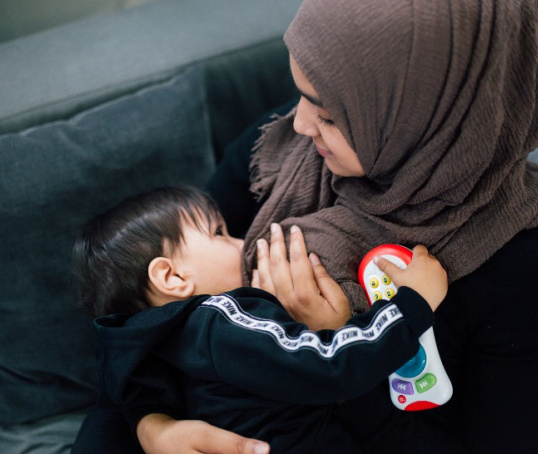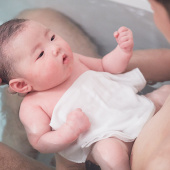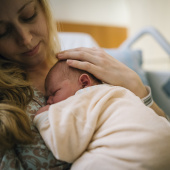You may feel nervous about giving your baby a bath to begin with so you could try washing them by topping and tailing them. Here's a guide on how to do it.
Topping and tailing your baby involves using bowls of warm water to wash them. It’s a good way to make sure your baby is clean and dry without having to worry about putting them in a bath.
Step by step guide – how to top and tail your baby
- Make sure the room is warm and you have everything you need. You will need: two bowls of warm water with no products in them, cotton wool, towel, a clean nappy and clothes for your baby.
- It’s a good idea to top and tail your baby on a changing mat that is on the floor – if you can cope with kneeling. This means you won’t need to worry about your baby rolling off anything as they get bigger and more mobile.
- Wash your baby’s face using cotton wool. Wet each piece in a bowl of warm water, and then squeeze it out so it’s just damp when you use it. Reassure your baby as you go along.
- Start by wiping each of your little one’s eyes with a separate piece of cotton wool, working from the inner corner out. Use another piece to wipe around their mouth and nose.
- Never put anything like a cotton bud in your baby’s ears or nose. Just wipe what you can see.
- Take another piece of cotton wool and use it to clean your baby’s ears, neck and face. Pay attention to their neck creases – where milk and fluff can get trapped.
- Now wash your little one’s hands and feet, looking out for sharp fingernails. Babies often scratch themselves with their nails, so they need trimming regularly. You can use special baby nail clippers or small round-ended baby scissors. If you don’t want to cut them, you could file them with a fine emery board.
- Keep talking to your baby as you’re topping and tailing them and explain what you are doing. This will help them relax and they will begin to understand you.
- Take off your baby’s nappy and gently wash their bottom and genital area with fresh cotton wool and water. This is the tailing. Make sure you dry your little one carefully – in particular their skin folds.
- Until it drops off at around one week, you need to check your baby's umbilical cord stump is clean and dry. You don’t need to put anything on the umbilical cord stump routinely. If you're worried about bleeding or discharge from the stump, it's best to talk to your midwife or GP about it (NHS, 2021). You can find an NHS video on cord care here.
- Now put a clean nappy on and dress your baby in some clean clothes. Give them a cuddle and some more reassurance. Your little one might not like being washed to begin with, but as it becomes more familiar they will hopefully start to enjoy it.
As you become more familiar with washing your baby, it can also be a lovely bonding experience.
This page was last reviewed in November 2021
Further information
Our support line offers practical and emotional support with feeding your baby and general enquiries for parents, members and volunteers: 0300 330 0700.
You might find attending one of our NCT New Baby courses helpful as they give you the opportunity to explore different approaches to important parenting issues with a qualified group leader and other new parents in your area.
Make friends with other parents-to-be and new parents in your local area for support and friendship by seeing what NCT activities are happening nearby.
NHS Choices Birth to Five section.
Public Health England (PHE) provides guidelines about bathing children under two safely.
NHS. (2021) Your newborn baby. Available at: https://www.nhs.uk/pregnancy/labour-and-birth/after-the-birth/getting-t… [Accessed 22nd November 2021]
